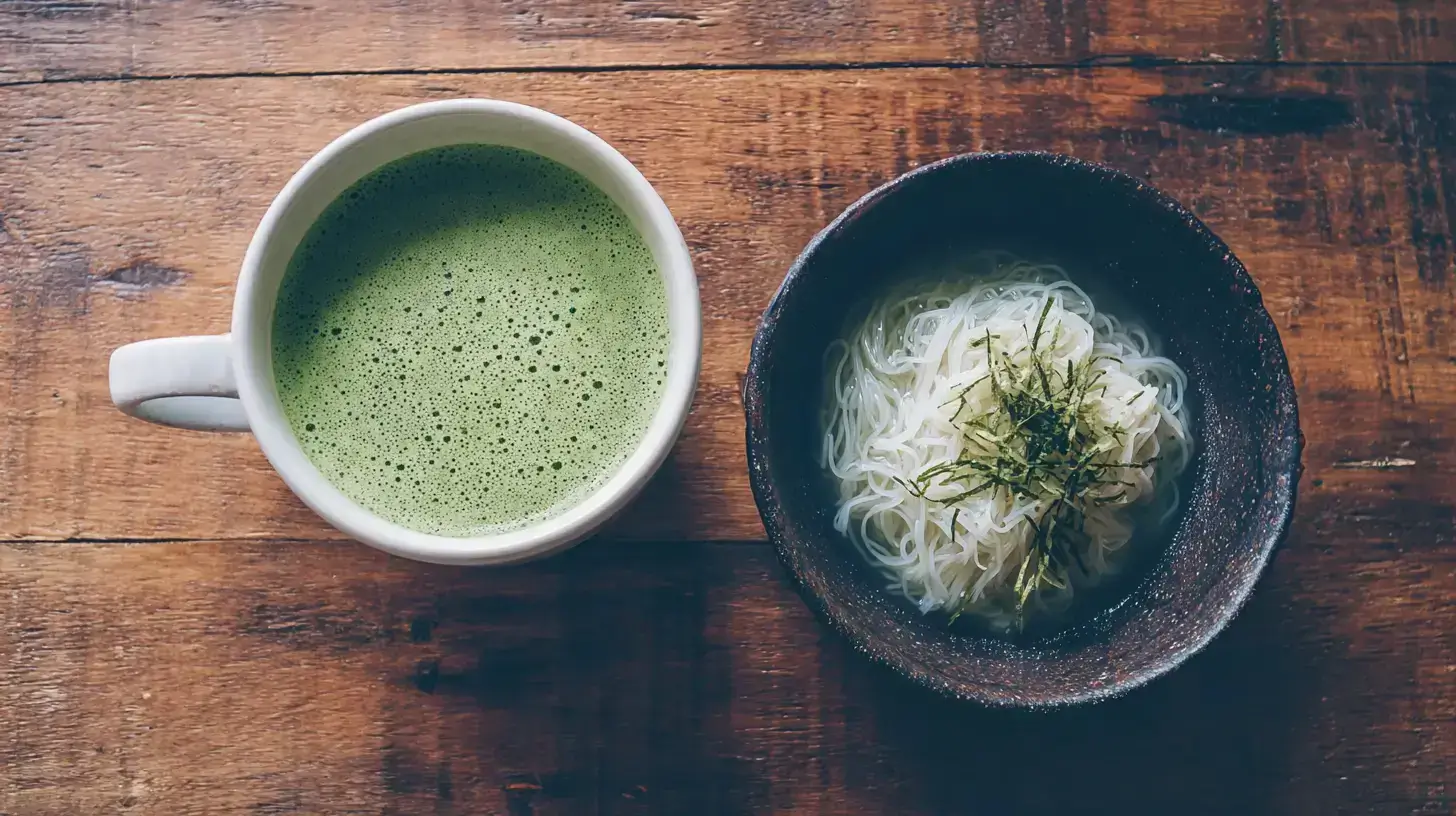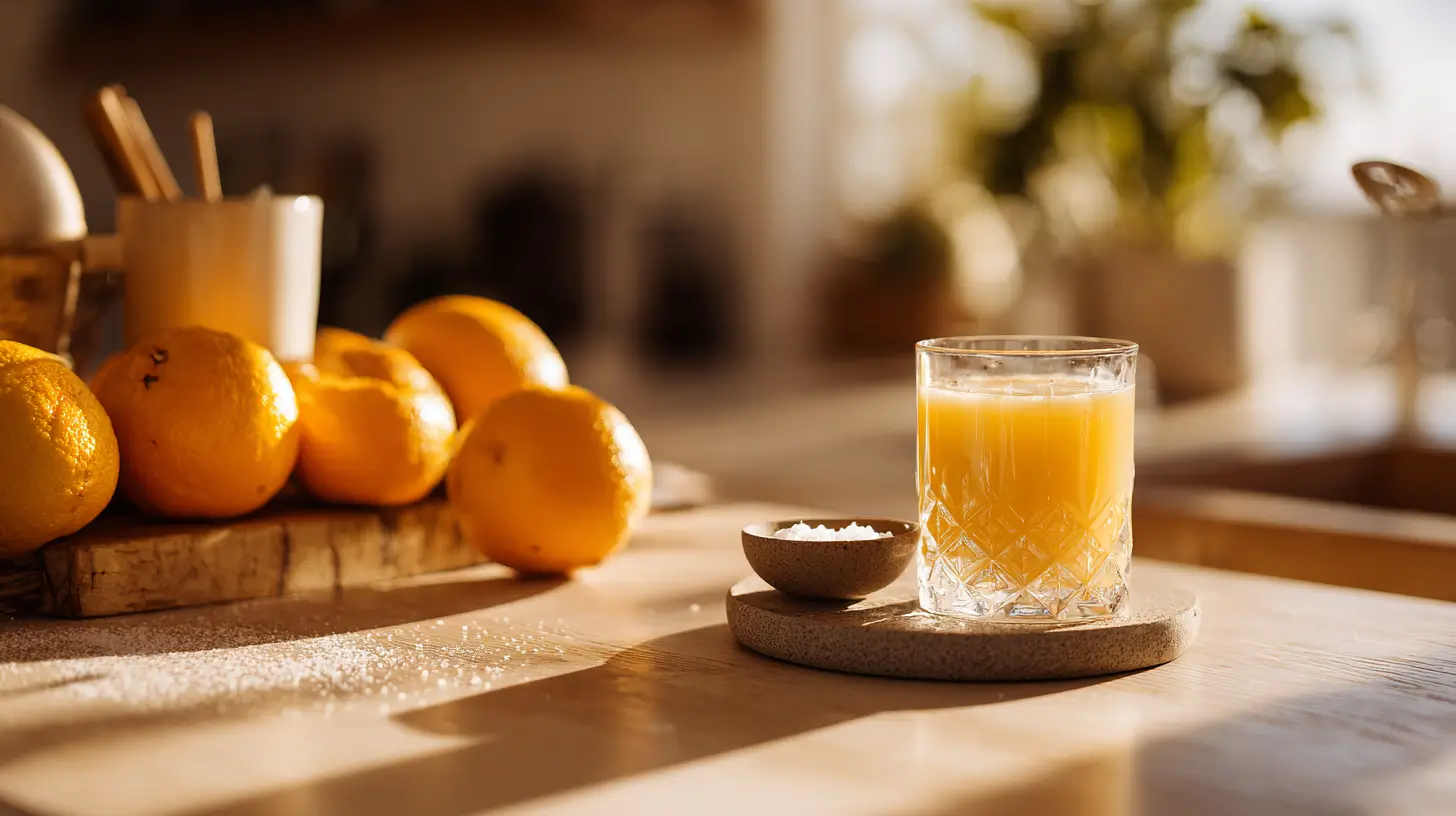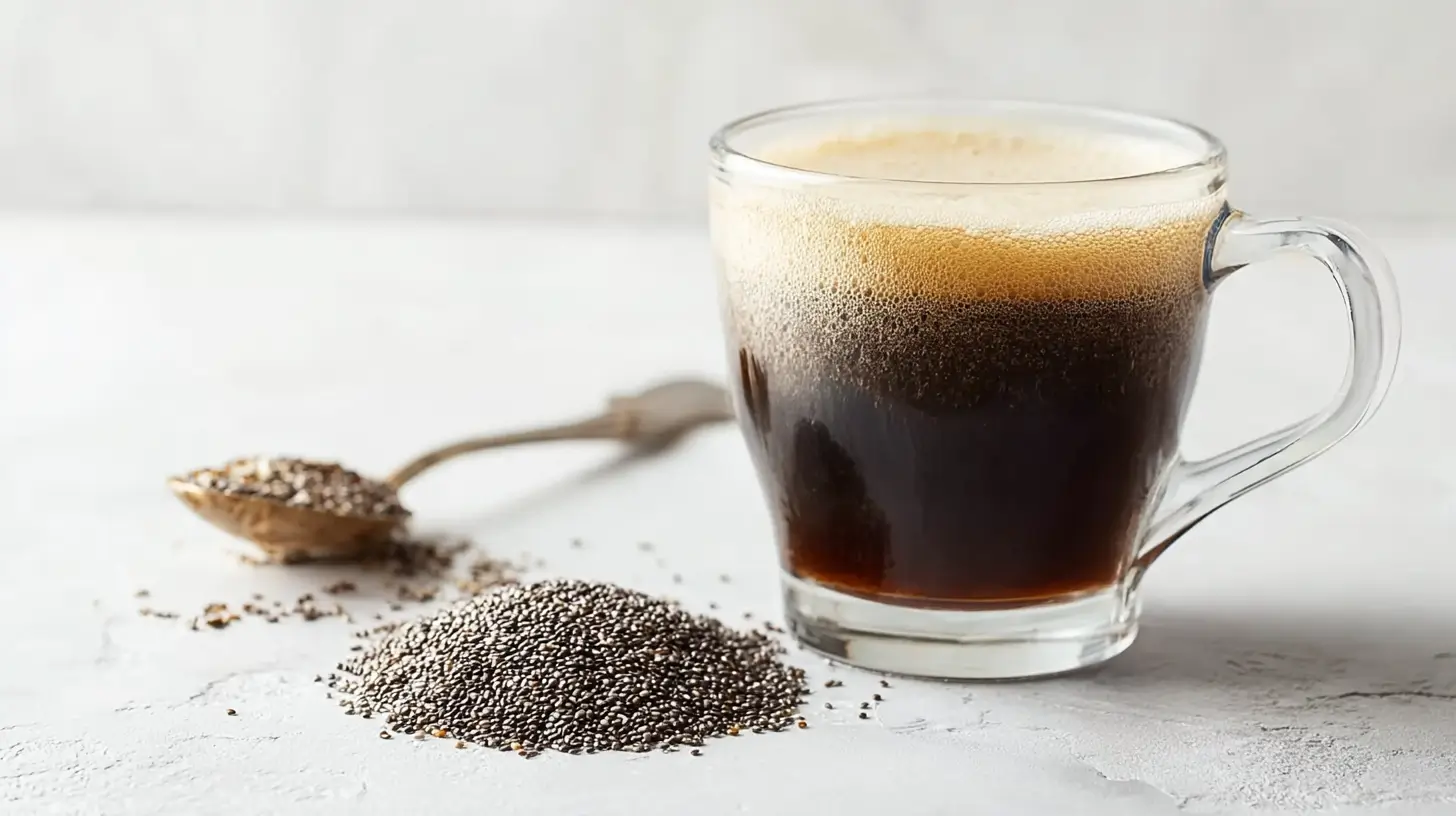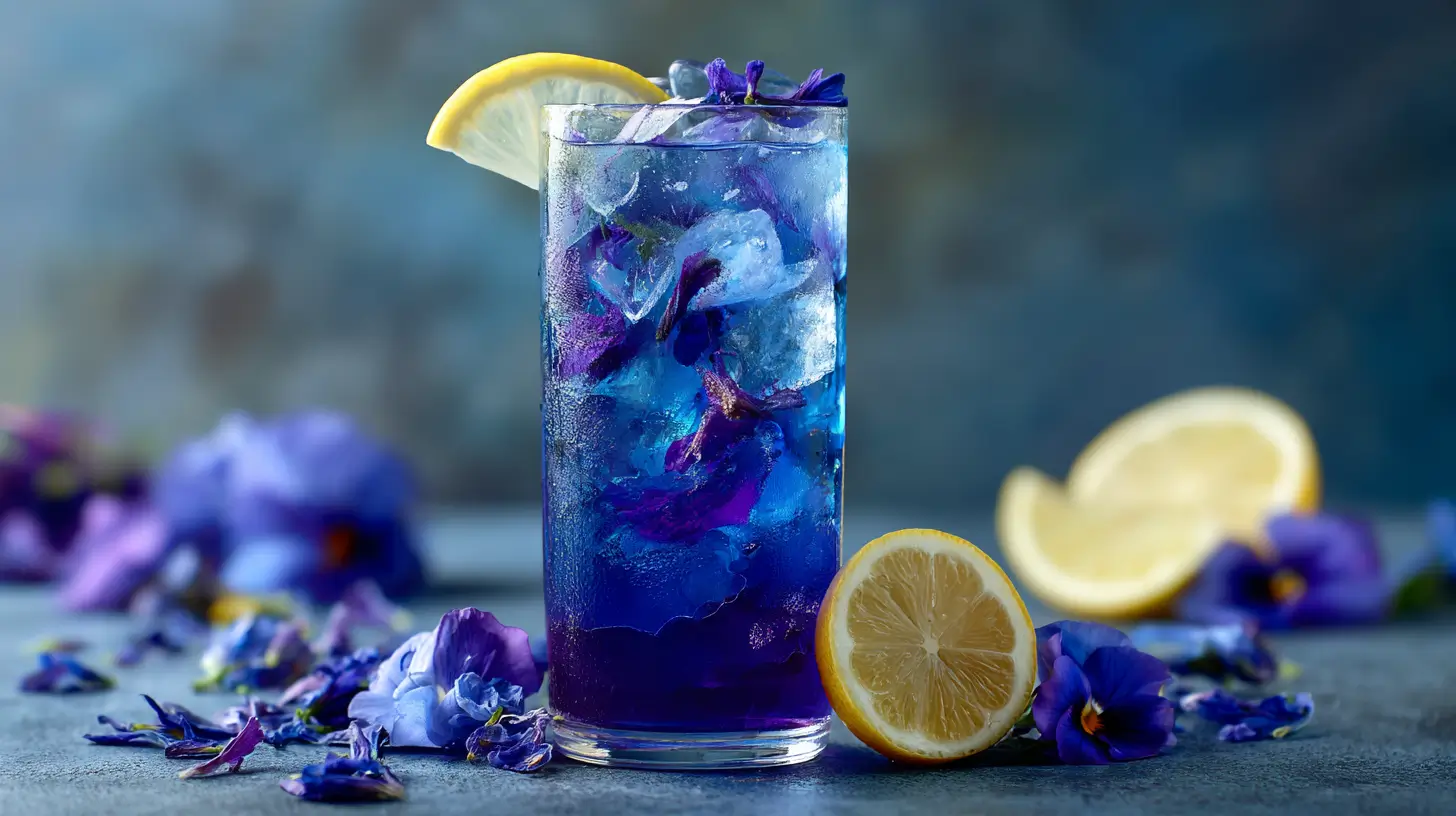The Japanese Mounjaro Recipe has become a viral sensation, sparking curiosity and confusion in equal measure. Some know it as a refreshing detox drink, others as a satisfying satiety bowl and both camps are right. It’s crucial to note from the outset: this homemade recipe is a wellness drink inspired by traditional Japanese ingredients; it is not a substitute for the prescription medication Mounjaro (tirzepatide) and does not replicate its potent effects.
That’s why I’ve created this guide. As a dedicated wellness researcher and recipe developer, I’ve delved into the science behind this trend, consulted expert opinions, and experimented with the core ingredients to bring you the most complete, evidence-based resource available. Whether you’re looking for a gentle metabolism boost, improved satiety, or simply a flavorful new addition to your health routine, this guide will give you the clear, factual, and actionable information you need.
Table of Contents
The Japanese Mounjaro Detox Drink
Origins & Cultural Inspiration of the Detox Drink
The origins of this drink draw heavily from Kyoto’s rich tea traditions, where matcha ceremonies celebrated both flavor and focus, L-theanine, and the calming rituals of preparation. In these traditional settings, matcha wasn’t just a beverage it was a mindful experience paired with simple, nourishing foods like kombu-based broths and fermented condiments such as umeboshi.
This aligns with modern research. Institutions like the Harvard T.H. Chan School of Public Health note that seaweed is a rich source of fiber and minerals, while matcha is packed with antioxidants called catechins, particularly EGCG, which may support metabolism. Furthermore, fermented foods like umeboshi contribute beneficial probiotics crucial for gut health. These time-honored ingredients, when combined, create a drink that bridges cultural heritage and evidence-based wellness benefits.
Print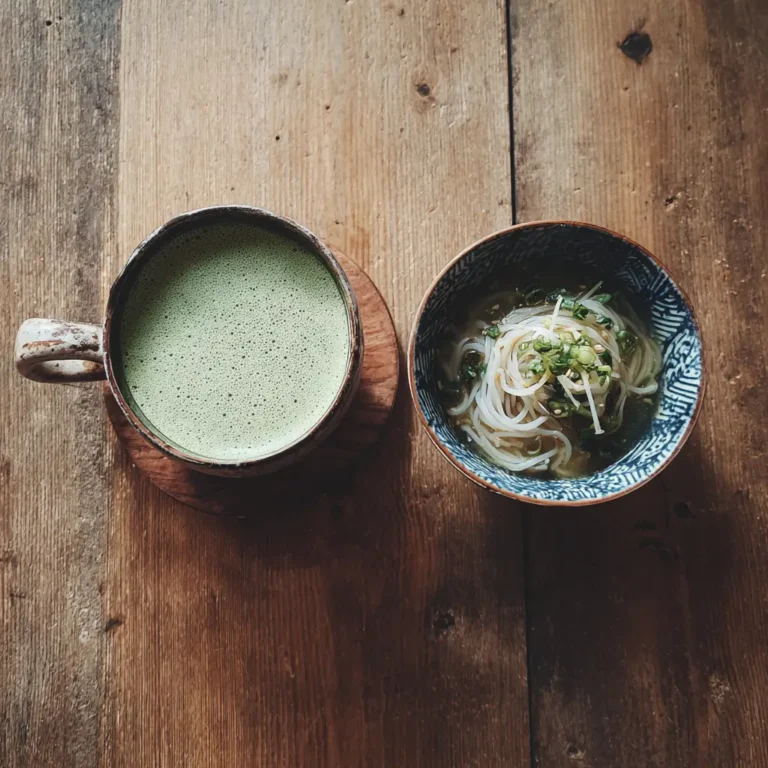
Japanese Mounjaro Recipe: Drink & Meal Versions (The Complete Guide)
Two variations of the Japanese Mounjaro Recipe a detox drink with matcha, kombu, and umeboshi, and a satiety bowl with shirataki noodles and miso.
- Total Time: 20 minutes
- Yield: 2 servings 1x
Ingredients
Drink Ingredients
-
1 tsp ceremonial-grade matcha powder
-
1 cup filtered water
-
1-inch kombu strip
-
1 tsp umeboshi paste
-
1 tsp grated ginger
-
1 tsp apple cider vinegar
-
Pinch pink Himalayan salt
Meal Ingredients
-
200g shirataki noodles
-
2 cups miso broth
-
1 cup vegetables (bok choy, mushrooms, carrots)
-
100g protein (tofu, chicken, or salmon)
-
1 tsp grated ginger
-
1 tsp miso paste
-
Pinch pink Himalayan salt
Instructions
Instructions – Drink
-
Steep kombu in hot water for 5 minutes, then remove.
-
Whisk matcha, umeboshi, ginger, vinegar into the kombu infusion. To prevent clumping, create a smooth paste by first whisking the matcha powder with a tablespoon of the warm kombu water before combining it with the rest of the liquid. A bamboo whisk (chasen) is traditional, but a small milk frother works well.
-
Sip slowly, ideally before a meal for best appetite-suppressing benefits.
Instructions – Meal
-
Rinse shirataki noodles under cold water and parboil for 2 minutes to remove any odor.
-
Simmer broth, vegetables, and ginger for 5 minutes.
-
Add protein, stir in miso paste just before serving to preserve probiotics.
-
Serve over shirataki noodles and garnish with fresh scallions if desired.
Notes
You can substitute zucchini noodles for shirataki, or lemon juice for umeboshi if unavailable.
Use high-quality matcha for best flavor and benefits.
For the best results and highest antioxidant content, use ceremonial-grade matcha, which has a vibrant green color and is made from the first harvest of tea leaves. For kombu, choose dark, thick sheets without artificial coloring.
- Prep Time: 10 minutes
- Cook Time: 10 minutes
- Category: Drinks, Main Dish
- Method: Stovetop, No-bake
- Cuisine: Japanese
Nutrition
- Serving Size: 1 drink or 1 meal
- Calories: 120 (drink) / 230 (meal)
- Sugar: 2
- Sodium: 480
- Fat: 5
- Saturated Fat: 1
- Unsaturated Fat: 3
- Trans Fat: 0
- Carbohydrates: 10
- Fiber: 4
- Protein: 8 (drink) / 18 (meal)
- Cholesterol: 0 (tofu) / 45 (meat)
From a weight-management perspective, note the low calorie count and significant fiber content in both versions. Fiber is crucial for promoting satiety (a feeling of fullness), which can help reduce overall calorie intake throughout the day.
Recipe & Benefits Breakdown
This recipe provides a synergistic blend of functional ingredients, offering a different approach from other wellness trends like the electrolyte-focused “pink salt trick.” Each component is selected for its evidence-backed properties, contributing to the drink’s metabolism-supporting, digestion-friendly profile.
| Ingredient | Key Benefits |
|---|---|
| Matcha | Antioxidants (EGCG Catechins), alert focus (L-theanine) |
| Kombu | Iodine for thyroid support, mineral boost |
| Umeboshi | Digestive aid (probiotics), alkalizing properties |
| Ginger | Anti-inflammatory (gingerols), thermogenic properties |
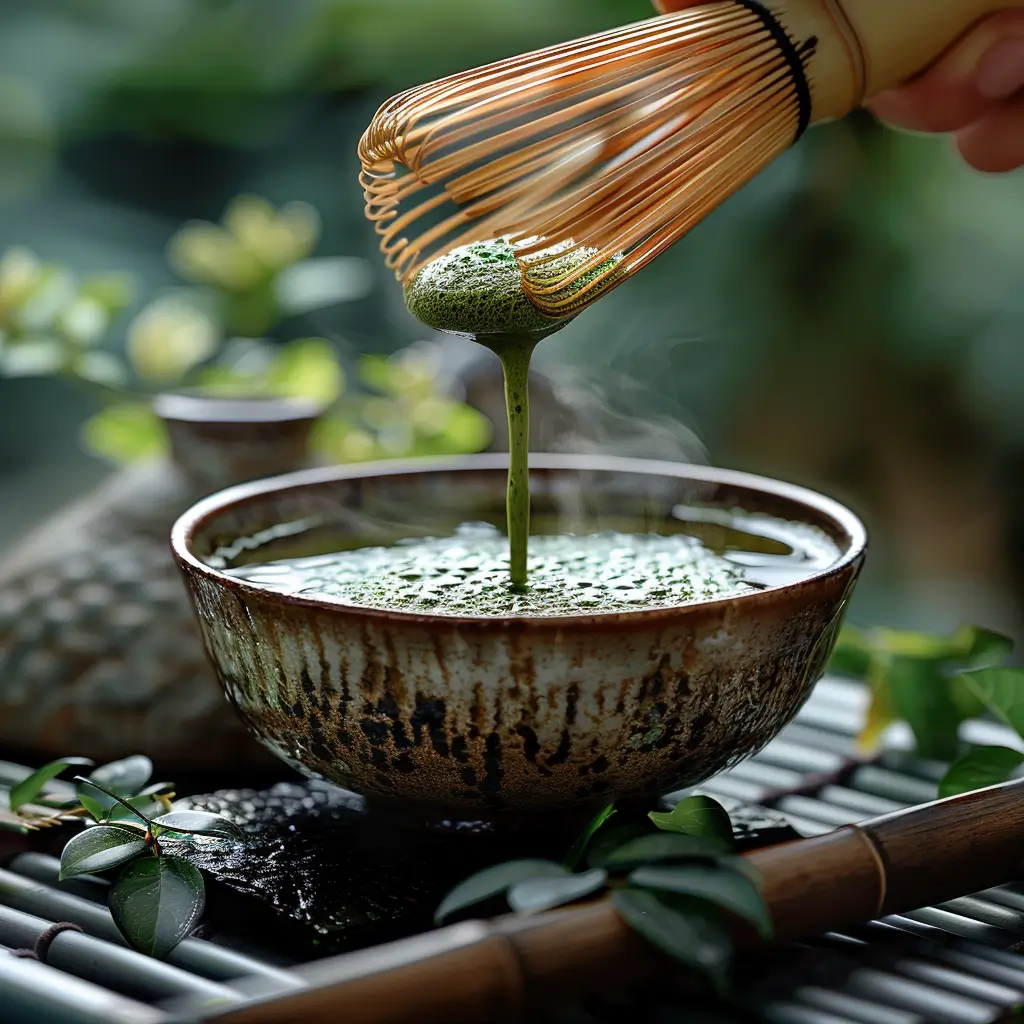
By combining these ingredients in precise proportions, the Japanese Mounjaro Detox Drink supports gut health, provides steady energy without the crash, and may assist in gentle appetite regulation.
The Japanese Mounjaro Satiety Bowl
Why the Meal Version Works for Weight Loss
The star of this meal is shirataki noodles, made from the konjac root and rich in glucomannan a unique soluble fiber with exceptional water-holding capacity. When consumed, glucomannan expands in the stomach, slowing digestion and creating a lasting feeling of fullness.
This high concentration of soluble fiber is key. Research shows that fibers like glucomannan can help naturally increase the release of satiety hormones, including GLP-1. While this is a far more modest and natural process than the potent pharmacological action of GLP-1 agonist drugs, it contributes to the meal’s impressive ability to keep you feeling full and satisfied. The National Institutes of Health has noted glucomannan’s potential for short-term weight loss due to its high viscosity and ability to promote fullness.
When combined with miso broth, vegetables, and a lean protein source, the Satiety Bowl delivers a balanced, low-calorie meal that supports energy levels while helping to curb the urge for between-meal snacking.

Satiety Bowl – Recipe & Variations
The base recipe for the Japanese Mounjaro Satiety Bowl delivers balanced nutrition, sustained energy, and impressive fullness thanks to glucomannan-rich shirataki noodles, probiotic-rich miso broth, and fresh vegetables. But with a few functional upgrades, you can tailor it to specific wellness goals.
To enhance the bowl’s functional benefits, consider these science-backed additions:
- Turmeric: Add ½ tsp for its anti-inflammatory compound, curcumin, which some studies suggest may also influence GLP-1.
- Wild Bitter Gourd: For those focused on blood sugar support, adding a few thin slices of bitter melon could be beneficial. Studies have shown it may help regulate blood sugar and increase GLP-1 levels.
- High-Protein Toppings: Boost satiety further by adding edamame or a sprinkle of toasted sesame seeds, which also provide healthy fats.
These additions not only elevate flavor but also expand the meal’s functional profile, making it adaptable for varied health goals.
Authentic vs. Substitute Ingredients Table
| Ingredient | Primary Function | Authentic Version | Substitute | Nutritional Trade-Off |
|---|---|---|---|---|
| Shirataki Noodles | Satiety (Glucomannan Fiber) | Shirataki noodles from konjac root | Zucchini noodles | Zucchini noodles add vitamins but lack the potent appetite-suppressing glucomannan fiber. |
| Dashi Broth | Umami & Iodine | Traditional kombu-based dashi | Vegetable broth | Vegetable broth provides flavor but lacks the thyroid-supporting iodine from kombu. |
| Umeboshi | Probiotic & Alkalizing | Fermented pickled plum | Lemon juice | Lemon juice provides a sour taste and Vitamin C but lacks the unique organic acids and probiotic benefits of fermented plum. |
| Miso Paste | Probiotic & Umami | Soy-based miso paste | Chickpea miso | Chickpea miso is a good soy-free option but may have a different probiotic profile and milder flavor. |
Ingredient Sourcing & Practical Tips
Where to Find Authentic Ingredients
One of the biggest hurdles for many home cooks trying the Japanese Mounjaro Recipe is tracking down authentic ingredients like kombu, umeboshi, and shirataki noodles. While major supermarkets are improving their Asian food sections, specialty Japanese markets or online retailers still offer the best variety and freshness. Stores like Mitsuwa Marketplace or Uwajimaya stock high-quality kombu and umeboshi with proper labeling. Online, you can find ceremonial-grade matcha and shirataki noodles from verified Japanese brands through reputable e-commerce sites. For example, the same matcha I use in my Matcha Boba Milk Tea Recipe is available in multi-pack tins that last months if stored properly. And yes, kombu sheets are worth ordering in bulk to always have them on hand for soups or broths.
Substitutions Without Losing Benefits
If certain ingredients are hard to find, you can still keep your recipe close to the original. Spinach or kale can stand in for kombu in a pinch, although you’ll lose some iodine content. Lemon juice with a pinch of salt can mimic the tang of umeboshi, though you’ll miss its probiotic benefits. Shirataki noodles can be swapped with spiralized zucchini or spaghetti squash, but you’ll lose the glucomannan that supports appetite suppression. I’ve tested these substitutions in various recipes, including my Apple Peel Tea Recipe for Weight Loss, and they still produce tasty results while keeping health goals in mind.
| Ingredient | Where to Buy | Notes |
|---|---|---|
| Ceremonial Matcha | Japanese specialty shops, high-quality tea retailers, trusted online stores | Look for “first harvest” labeling and a vibrant, not dull, green color. It should smell fresh and grassy. |
| Kombu | Asian grocery stores, Japanese markets, online seaweed suppliers | Avoid overly bleached or thin sheets. A light dusting of white powder (mannitol) is normal and adds sweetness. |
| Umeboshi | Japanese supermarkets, organic food stores, specialty online retailers | Choose products without artificial red coloring or excessive preservatives. Ingredients should be simple: plums, salt, and shiso leaves. |
| Shirataki Noodles | Asian markets, health food stores, major online grocers | Rinse well under cold water to remove the natural konjac aroma before cooking. |
The Science: How Individual Ingredients May Offer Support
It is essential to understand that this recipe is not a pharmaceutical product and does not function like the drug Mounjaro. Its benefits stem from the synergistic effects of its whole-food ingredients.
Satiety and Gut Health: The primary mechanism for the Satiety Bowl is the glucomannan fiber in shirataki noodles. This soluble fiber absorbs water, forming a gel in the digestive tract that promotes a feeling of fullness. Additionally, fermented ingredients like miso and umeboshi provide probiotics, which support a healthy gut microbiome a key factor in overall metabolic health.
Metabolic and Antioxidant Support: Matcha is rich in EGCG (epigallocatechin gallate), a catechin that studies suggest may provide a modest boost to metabolism and fat oxidation. The iodine in kombu is vital for healthy thyroid function, which regulates your body’s metabolism.
A Note on GLP-1: Some ingredients in this recipe, particularly soluble fiber, can naturally and modestly stimulate the body’s own production of satiety hormones like GLP-1. This is a gentle, food-based biological process and should not be confused with the potent, pharmacological effect of GLP-1 agonist drugs like Mounjaro or Ozempic.
To provide absolute clarity, the table below compares this homemade recipe to the prescription medication Mounjaro:
| Feature | “Japanese Mounjaro” Recipe | Prescription Mounjaro (Tirzepatide) |
|---|---|---|
| Primary Components | Matcha, Kombu, Umeboshi, Shirataki Noodles (Whole Foods) | Tirzepatide (Synthetic dual GIP/GLP-1 receptor agonist) |
| Mechanism of Action | Gentle support via fiber, probiotics, and nutrients. | Potent pharmacological mimicking of GIP and GLP-1 hormones to regulate blood sugar and appetite. |
| Expected Efficacy | Supportive for a healthy lifestyle; may aid in satiety and provide modest metabolic support. | Clinically proven for significant weight loss and Type 2 diabetes management. |
| Potential Side Effects | Generally safe; high sodium for some, iodine sensitivity. | Common: Nausea, diarrhea, constipation, stomach pain. Rare but serious risks exist. |
| Regulation | Food | Prescription-only, FDA-approved medication. |
| Typical Cost | Low (cost of groceries) | High (Often $1,000+ per month without insurance) |
Important Safety Considerations and Who Should Avoid This Recipe
While the ingredients are natural, “natural” does not mean “risk-free.” It is crucial to consider the following:
Sodium Content: Umeboshi, miso, and added salt contribute to a high sodium load. Individuals with hypertension (high blood pressure) or those on a sodium-restricted diet should use these ingredients sparingly or omit them.
Iodine Content: Kombu is rich in iodine. While essential for most, people with pre-existing thyroid conditions (like Hashimoto’s or Graves’ disease) or an iodine sensitivity should consult their doctor before regular consumption, as excess iodine can disrupt thyroid function.
Allergies: This recipe contains common allergens like soy (in miso). Always check ingredient labels to ensure there are no hidden additives that could trigger a reaction.
Pregnancy and Breastfeeding: Due to the concentrated nature of some ingredients, it is best to consult a healthcare provider before making this a regular part of your diet if you are pregnant or breastfeeding.
Crucial Disclaimer: This information is for educational purposes only. Always consult with a qualified healthcare professional or registered dietitian before making significant changes to your diet, especially if you have pre-existing health conditions or are taking any medications.
Conclusion
By understanding both the traditional wisdom behind its ingredients and the modern scientific context, you can approach the Japanese Mounjaro recipe not as a quick fix, but as a mindful and supportive ritual to complement a healthy lifestyle. We encourage you to listen to your body and consult with a healthcare professional to best support your individual wellness goals.
For more evidence-based wellness guides and healthy recipes, follow us on Pinterest and Facebook.
Frequently Asked Questions
What is the Japanese Mounjaro recipe?
It’s a wellness trend from Japan featuring two variations a detox drink with matcha, kombu, and umeboshi, and a satiety bowl with shirataki noodles, miso, and vegetables both aimed at supporting weight management.
How to make Japanese Mounjaro?
For the drink, steep kombu, whisk in matcha, umeboshi, ginger, apple cider vinegar, and pink salt. For the bowl, simmer miso broth with vegetables and protein, and serve over shirataki noodles.
Are there other natural ingredients that support metabolic health?
Yes, research is exploring many compounds. Berberine, found in plants like goldenseal, and curcumin from turmeric are two supplements that have been studied for their potential effects on blood sugar and metabolism, though more research is needed. It’s best to focus on a balanced diet rich in fiber, lean protein, and healthy fats.
Can this recipe cause side effects like the drug Mounjaro?
No. The common side effects of pharmaceutical Mounjaro, such as nausea and constipation, are linked to its potent hormonal mechanism. This food-based recipe does not have that effect. However, some individuals may experience digestive changes due to the high fiber content, or have sensitivities to the high sodium or iodine levels.
What is the difference between this and the ‘Pink Salt Trick’?
They are entirely different. The Japanese Mounjaro recipe uses a blend of traditional Japanese ingredients like matcha, kombu, and umeboshi to support metabolism and digestion. The ‘Pink Salt Trick’ is a simple drink of water, Himalayan salt, and sometimes lemon, primarily focused on hydration and electrolyte balance.
